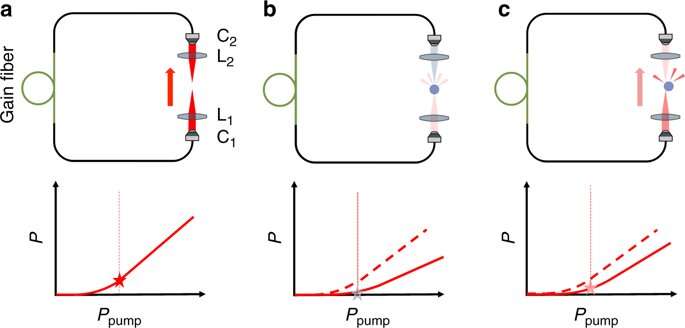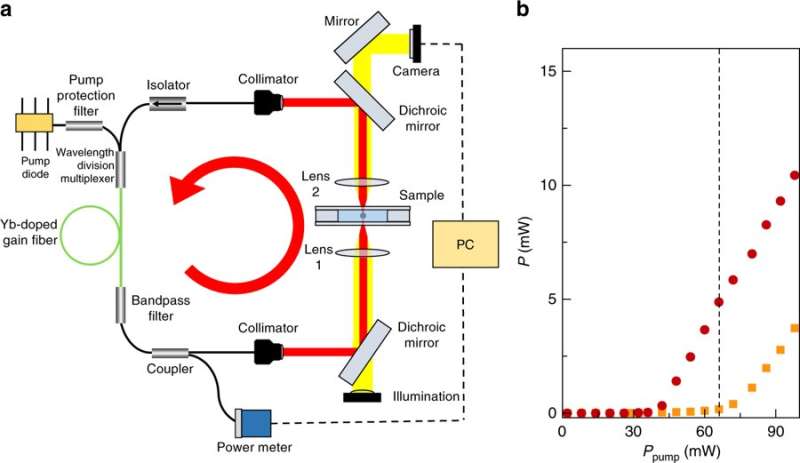A new force for optical tweezers

When studying biological cells using optical tweezers, one main issue is the damage caused to the cell by the tool. Giovanni Volpe, University of Gothenburg, has discovered a new type of force that will greatly reduce the amount of light used by optical tweezers—and improve the study of all kinds of cells and particles.
"We call it 'intra-cavity feedback force.' The basic idea is that, depending on where the particle or cell you want to study is, the amount of laser light used to trap it changes automatically. Whenever the particle is in focus, the laser switches off. When the particle tries to escape, the laser switches on again," says Giovanny Volpe, senior lecturer at the Department of Physics, University of Gothenburg.
An optical tweezer is a focused laser beam that can trap particles. Previously, two different types of forces that emerge from this type of tool have been identified: gradient force (which means the particle goes against the intensity of the laser) and scattering force (where the particle is pushed towards the laser). Giovanni Volpe and his team have discovered a third type of force in this realm, and a new way of constructing optical tweezers. These breakthroughs are poised to greatly improve the study of single biological cells.
"With this method, as much as 100 times less light is needed, in some cases, compared to using a traditional optical tweezer," Giovanni Volpe explains. "With less light, you cause less photo damage to the cell you are studying."

This could be useful for studying any cell that is usually suspended in a solution—a blood cell or a yeast cell, for example—that a researcher would want to study over a long period of time.
"One of the main issues when using optical tweezers is that the light raises the temperature of the cell, which is damaging. A rise of 10 degrees might not be tolerable, but the rise of 0,1 degrees might be fine. So using less light, and therefore limiting the rise in temperature, could make a huge difference. Experiments could be done in a more realistic manner in relation to the cell's natural life cycle," says Giovanni Volpe.
The findings are published in Nature Communications.
More information: Fatemeh Kalantarifard et al. Intracavity optical trapping of microscopic particles in a ring-cavity fiber laser, Nature Communications (2019). DOI: 10.1038/s41467-019-10662-7
Journal information: Nature Communications
Provided by Göteborgs universitet




















